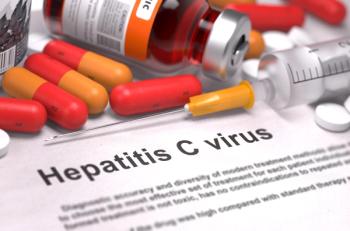
Corticosteroids May Increase Retinopathy in Premature Infants
Approximately 80.5% of premature infants treated with steroids developed retinopathy.
Findings from a recent study suggest that steroid treatment administered to infants with very low birth weight may increase the risk of retinopathy.
For very premature infants who are dependent on a ventilator, corticosteroids are beneficial to their lung function and may treat lung disease. However, there has been much speculation that this may negatively affect neurodevelopment.
Researchers in the study, which was published by the Journal of the American Association for Pediatric Ophthalmology and Strabismus, discovered that infants weighing less than 500 grams at birth had a 1.6 times greater risk for
Patients included in the study were less than 500 grams at birth, discharged from the hospital alive, and had results from an ophthalmic ROP examination, according to the study.
“Our study group consists of premature infants with birthweights at the lowest level that is compatible with life. This group represents a more homogeneous set of neonates than in other studies that consist of premature infants with a broader range of birthweights,” said lead investigator Tammy Z. Movsas, MD, MPH. “Neonates at these critically low birth weights (and gestational ages) are at the absolute highest vulnerability for a host of neonatal morbidities including ROP and bronchopulmonary dysplasia. Thus, clinical differences between steroid treated and untreated neonates are minimized.”
Even after accounting for other factors, researchers found a higher risk of ROP in infants treated with corticosteroids compared with those who did not receive the treatment. Among the study participants, 1059 received postnatal steroids and 413 did not.
The researchers discovered that the incidence of ROP for all patients was 76.6% and incidence of advanced ROP was 31.3%. They also found that 80.5% of patients treated with steroids developed ROP, and 66.8% of patients who did not receive treatment developed ROP, according to the study.
Incidence of advanced ROP were 35.3% in the treated group, compared with 21.1% of the untreated group.
“This study of a large database of critically low birth weight survivors indicates that steroid-treated infants have a modest but significantly increased risk for ROP. That said, clinicians need to use their best judgment to balance the positive effects from steroids on developing lungs with potential negative effects on developing eyes in very premature infants,” Dr Movsas concluded. “This study has potential clinical significance since children with a history of ROP are not only at increased risk for visual impairments from the ROP itself, but are also at increased risk for developing other ocular disorders later in life.”
Newsletter
Stay informed on drug updates, treatment guidelines, and pharmacy practice trends—subscribe to Pharmacy Times for weekly clinical insights.




















































































































































































































